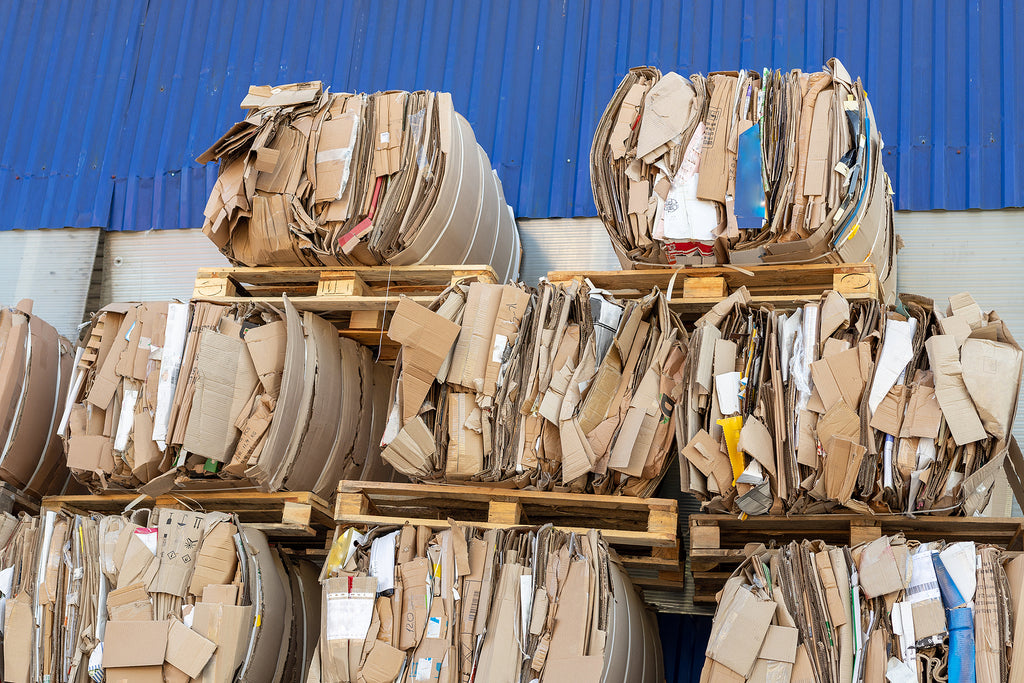Benefits of Material-Based Waste Segregation vs General Waste

Warehouses produce significant garbage, but without proper waste separation, much of the recyclable and non-biodegradable materials are sent to landfills, adding to the growing amount of solid waste created annually.
Waste segregation is a recommended strategy for warehouses to reduce their environmental footprint while optimizing waste management practices. Learn more about the benefits of material-based waste segregation below.
Material-based waste segregation vs general waste
General waste is the garbage that goes to the dump. Typically, these are materials that cannot be recycled or composted. This includes food, non-recyclable plastics, cooking oil, soiled wrappers, hygiene materials, etc.
Material-based waste segregation involves separating waste into different elements or materials. An example of this would be separating general waste from recyclable waste. However, separation is often broken down into smaller categories. This is discussed below.
The importance of waste segregation
According to a 2018 report by the World Bank Group, the world generates approximately 2.01 billion tonnes of solid waste each year. In 2018, the United States accounted for about 292.5 million tonnes (according to the Environmental Protection Agency), and Canada created 35.5 million tons (source). Unfortunately, much of this waste is not disposed of properly, and poor waste management is one of the culprits.
General waste systems are vital tools for waste segregation, but they are often not used correctly. This is often accidental as many are unaware of what is and is not allowed in general waste (e.g., leaves and lawn clippings). However, when waste separation is unavailable or easily accessible, many people default to general waste systems, and thus, more solid waste is sent to landfills. This is a big issue in facilities that produce large amounts of mixed waste, like warehouses. Material-based waste segregation can help reduce the frequency of improper disposal.
It is important to separate general waste from recyclables, but recyclable materials should also be separated. These materials are processed differently, and improper sorting may turn recyclables into general waste. For example, glass and paper are both recyclable. However, if a glass bottle is smashed, it cannot easily be separated from the paper. Therefore, both materials will likely end up in a landfill instead of a recycling center. Separating recyclables (and non-recyclable materials) at the source reduces contamination and solid waste generation.
Waste segregation in the warehouse
Waste management accounts for about four to five percent of company turnover. Although waste segregation can help minimize environmental impact, companies may be hesitant to implement these practices because of time and budget constraints. However, poor waste separation and collection will likely cost more than it saves.
The five most common types of waste created in a warehouse include:
- Organic matter
- Glass/metal/plastic
- Paper/cardboard
- Hazardous and toxic materials
- Residue (e.g., soiled or wet materials)
Most warehouse waste can be recycled. However, inadequate waste disposal and separation options will increase solid waste generation. Additionally, it can disrupt workflow and pose potential safety risks.
For example, soiled or wet materials will likely contaminate “clean” materials if placed in the same receptacle, resulting in all recyclable and non-recyclable materials becoming general waste. Similarly, sharp options can pierce a bag or bin. Without adequate labeling, workers may not know what is inside the receptacle and risk harming themselves when emptying it.
Poor waste disposal options can also cost companies money. When there are few disposal workers are likely to hold on to waste until they find a space to dispose of this. For example, forklift operators frequently remove shrink wrap from pallets throughout the day. When they hold onto it may fall on the ground, get picked up by the machine, and bind the motors. This can cause severe damage that is tricky and costly to fix. Having several waste sorting receptacles throughout the facility can help avoid situations like this and minimize other issues caused by improper disposal. It can also improve organization and productivity.
Simplify trash separation with the RackSack
The Rack Sack is a reusable trash receptacle for warehouse and industrial workplaces. It is an affordable, space-saving, compliant, and versatile option for waste segregation.
The waste segregation product is made from tough, waterproof polyester capable of holding up to 42 gallons (159 L) of trash. It is equipped with S hooks making for easy installation on racking uprights or any hookable surface.


The Rack Sack is designed to save valuable floor space while improving and simplifying waste separation. It is available in 14 text and five symbol-only designs that can be used for almost any recyclable material. Signage options include:
- Blank, aluminum, wood & timber, building material, electrical, general waste, litterman symbol – no text, plastic only symbol – no text, and various other combinations.
The Rack Sack is lightweight, easy to handle, and costs only $49.50. It is also available in a smaller version, perfect for desks and smaller workbenches. Check out the Rack Sack Mini here.

Learn more about the Rack Sack and Rack Sack Mini in the following articles:
BECOME A RACKSACK DISTRIBUTOR
Interested in distributing this product? Send inquiries to ted@leanmh.com. Reseller certificate required. More info here.
BECOME A RACKSACK WEB AFFILIATE
To become a commission-earning web affiliate (no reseller certificate required), you can click here. Earn commission by referring customers to our store and get paid when they buy from us.
